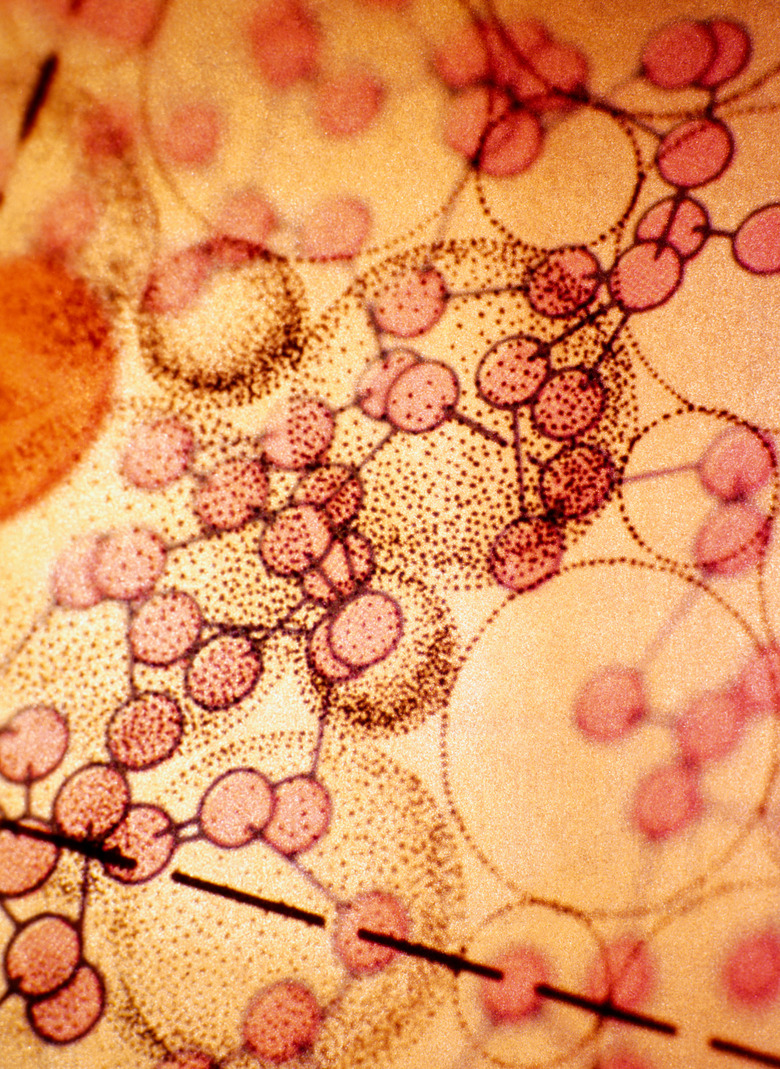Why Can The Surface Of The Plasma Membrane Be Described As A Mosaic?
The plasma membrane of a cell is composed of numerous proteins and fats. They can be bound to each other, or be separated. The proteins and fats can also have sugar groups bound to them. Each of these molecules has a different function for the cell, such as adhering to other cells, maintaining fluidity of the membrane and allowing molecules to enter the cell. These different molecules are distributed randomly on the surface of the plasma membrane, giving it a mosaic appearance.
Plasma Membrane Structure
Plasma Membrane Structure
The plasma membrane, which surrounds a cell, is composed of two layers of lipid chains with phosphate groups, called phospholipids, at the end. The phospholipid layers are arranged so that the phosphate groups are all aligned with the lipid chains, parallel to each other. The lipid chains of the two layers form facing one another, so that the phosphate groups are on the outside of the membrane, with the lipid chains in between. The plasma membrane also contains several other proteins, lipids and sugars that are dispersed throughout the membrane.
Plasma Membrane Proteins
Plasma Membrane Proteins
Several types of proteins are found on the plasma membrane. Many of these proteins are receptors, which bind to other proteins and cause changes inside the cell. Some plasma membrane proteins are able to bind to proteins onto other cells, causing the cells to attach. This gives strength to tissues in which cells are tightly bound to each other. Another major function of plasma membrane proteins is to act as channels, or pores, to allow substances such as water, ions and glucose to enter the cell.
Plasma Membrane Lipids
Plasma Membrane Lipids
Lipids are abundant on the surface of the plasma membrane. Lipids are primarily involved in giving fluidity to the plasma membrane. Three types of lipids are commonly found in the plasma membrane: phospholipids, glycolipids and cholesterol. Phospholipids compose the majority of the plasma membrane itself, while glycolipids allow signaling to other cells. Cholesterol gives fluidity to the membrane, preventing it from hardening.
Plasma Membrane Sugars
Plasma Membrane Sugars
Sugar groups on the plasma membrane are bound to proteins and lipids. When bound to lipids, known as glycolipids, they are involved in sending signals from cell to cell. Sugar groups bound to proteins, known as glycoproteins, have a variety of functions. They can attach to glycoproteins on other cells, leading to adhesion and adding strength to tissues. Glycoproteins can also bind to neighboring glycoproteins on the membrane, forming a sticky coating that prevents invading microorganisms from entering the cell.
Cite This Article
MLA
Thompson, Noelle. "Why Can The Surface Of The Plasma Membrane Be Described As A Mosaic?" sciencing.com, https://www.sciencing.com/why-can-the-surface-of-the-plasma-membrane-be-described-as-a-mosaic-12730901/. 21 November 2013.
APA
Thompson, Noelle. (2013, November 21). Why Can The Surface Of The Plasma Membrane Be Described As A Mosaic?. sciencing.com. Retrieved from https://www.sciencing.com/why-can-the-surface-of-the-plasma-membrane-be-described-as-a-mosaic-12730901/
Chicago
Thompson, Noelle. Why Can The Surface Of The Plasma Membrane Be Described As A Mosaic? last modified March 24, 2022. https://www.sciencing.com/why-can-the-surface-of-the-plasma-membrane-be-described-as-a-mosaic-12730901/
